High-quality natural hot spring born from the celebrated
water of Kyoto and the ancient strata
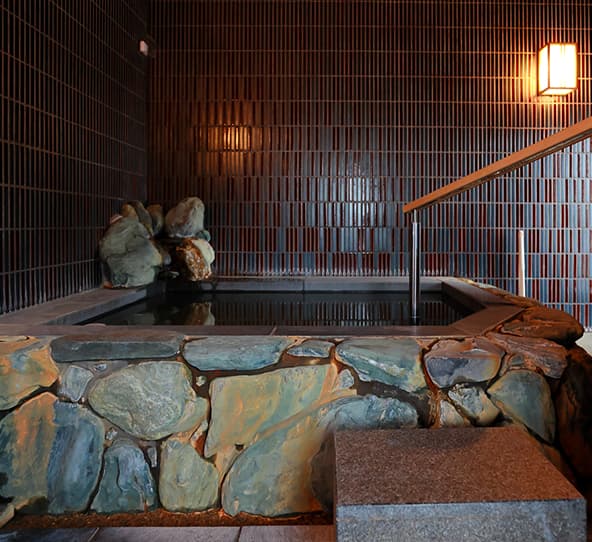
The Japanese onsen culture
With 1,300 years of rich history, the Japanese onsen (natural hot spring) has been known as a place of healing that makes full use of the blessings of nature. The mineral-rich onsen water helps maintain beautiful skin. Also, warming your body in the onsen raises your body temperature, and your blood circulation improves. This allows muscle tension to loosen, resulting in a relaxed feeling of both mind and body. For the guests, bathing in the onsen is the best way to refresh your body and mind during your stay. The Japanese people have always enjoyed the benefits of the onsen in their daily lives. One example is the culture of therapeutic bathing called "toji (hot spring cure)" dating back to ancient times. The Japanese onsen culture is the culture that brings healing to the body and mind.
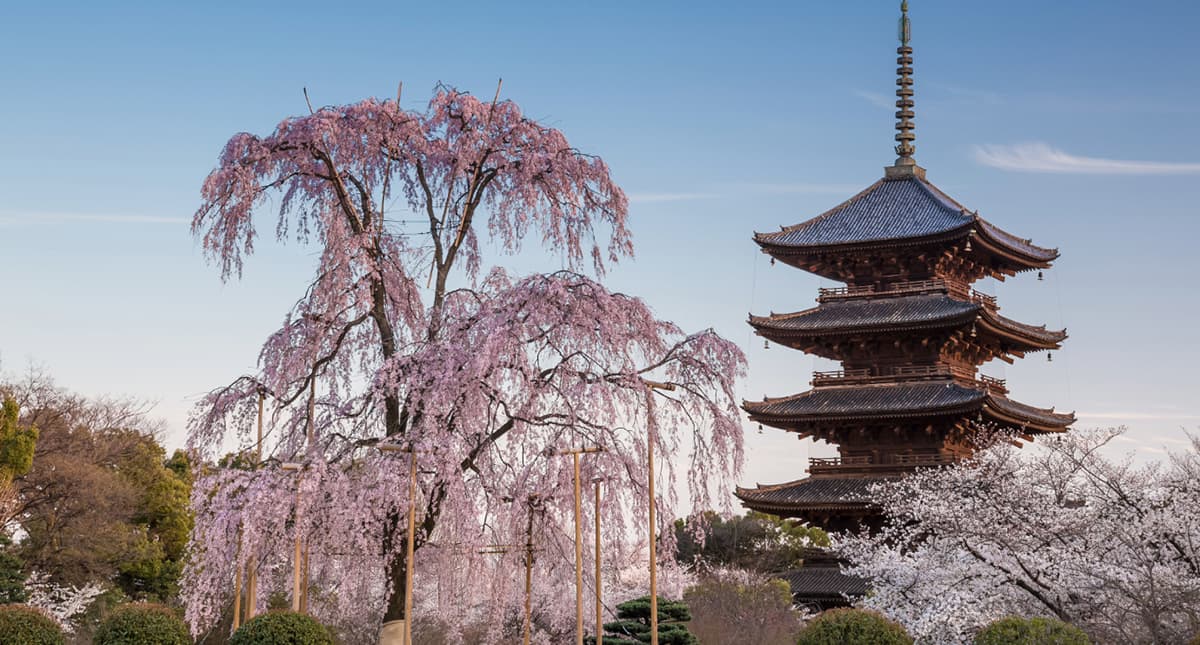
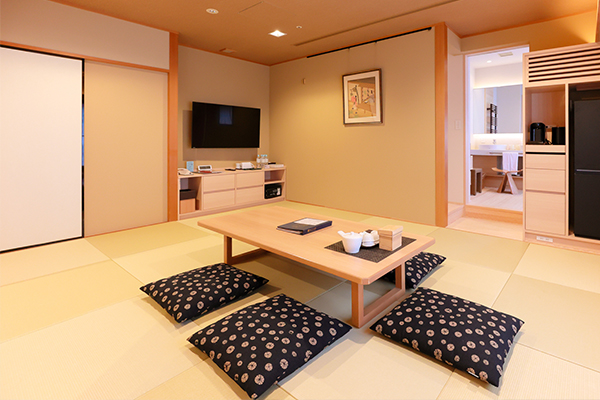

Thermal effects
Warming your body in the onsen raises your body temperature, and your blood circulation improves. This allows tension in the muscles to loosen, resulting in the entire body feeling relaxed. Lounging in warm onsen water allows the body temperature to rise, creating a comfortable feeling of fatigue that helps you go into a deep state of relaxation.
Burden reduction due to buoyancy
Warming your body in the onsen raises your body temperature, and your blood circulation improves. This allows tension in the muscles to loosen, resulting in the entire body feeling relaxed. Lounging in warm onsen water allows the body temperature to rise, creating a comfortable feeling of fatigue that helps you go into a deep state of relaxation.
Massaging effects due to water pressure
The water pressure of the onsen creates a gentle massaging effect. This improves your blood and lymph circulation, resulting in benefits such as reducing swelling and activating the metabolism. Also, it helps the elimination of waste from the body and refreshes the body.
Mineral-rich composition
Onsen water is rich in minerals such as sulfur, bicarbonate, sodium, and calcium. These minerals are taken into the body through your skin. They loosen the tension of the muscles and improve the metabolism of your skin. In addition, they moisturize the skin and beautify it.
Skin-beautifying effects
Kyoto Hot Spring belongs to the category of "hydrogen carbonate springs," which is known for its skin-beautifying effects. The onsen is also known as "Bihada no Yu (beautiful skin onsen)" or "Atatamari no Yu (body warming onsen)" due to its creamy and silky water. Also, the salt contained in the water of Kyoto Hot Spring helps soften the surface of the skin. It also has a soothing effect, bactericidal effect, and prevents the feeling of chilliness after the bath.
High-quality sleep effects
It is often reported that you can sleep deeply after bathing in the onsen, due to its relaxing effect and the blood circulation promotion effect. The thermal effects of the onsen help activate your parasympathetic nervous system (PSNS). PSNS is responsible for the body's relaxation and rest. When it is activated, it helps the body and mind to relax. It also allows you to sleep easily, resulting in a deep rest.
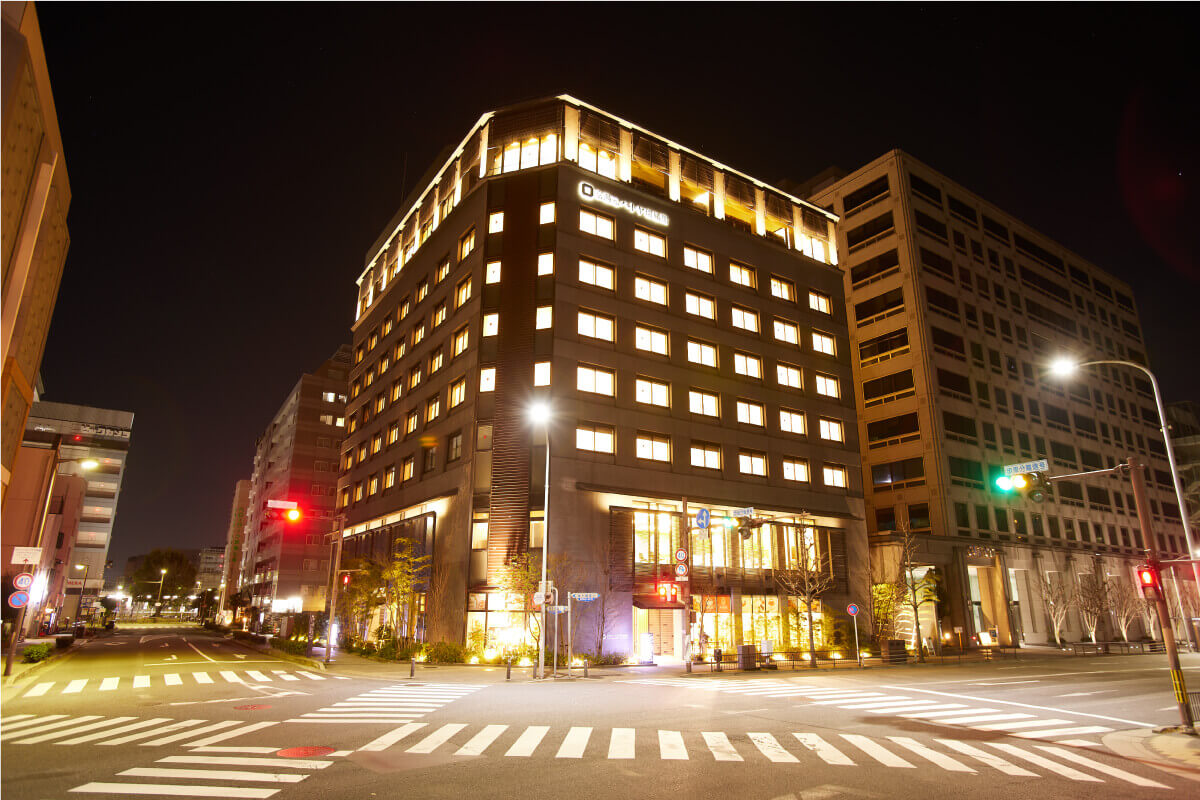
About Kyoto Hot Spring
Kyoto Hot Spring
- Kyoto Hot Spring flows up from a source 910 meters below ground. It comes from a crack inside a bedrock layer called "Tanbatai" that was created about 150 million years ago.
- It is the result of a marriage between the mineral-rich bedrock running beneath the Kyoto Basin and the celebrated water of this area.
- The subterranean water goes through extremely hard bedrock, so it takes thousands of years to arrive at the point of collection.
- "Tanbatai" is a geological zone that forms the base of this broad area that cuts from Hyogo Prefecture through Kyoto to Shiga Prefecture. The chert, sandstone, mudstone, and greenstone deposited on the seafloor of this zone contain many minerals from the ancient sea.
Spring quality: Sodium hydrogen carbonate spring, chloride springs
Indications: Menstrual pain, myalgia, arthralgia, frozen shoulder, motor paralysis, joint stiffness, bruises, sprains, chronic digestive diseases, hemorrhoids, sensitivity to cold, convalescence after illness, recovery from fatigue, health promotion, chronic skin diseases, chronic women's disease, acne, burns, frail children
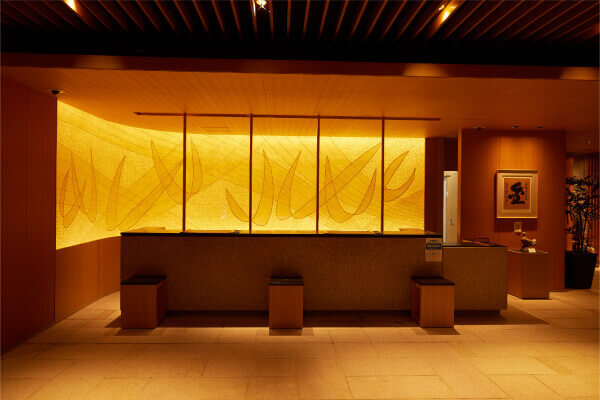
Awards Received
- Michelin Guide (2016 to 2020)
Earned 3 Michelin Stars and 3 Pavillions (Exceptionnaly pleasant to stay at) - Earned an A rating under the CASBEE (Kyoto) Certification system for building and housing
- Earned multiple JTB Awards (from 2016 to 2019)
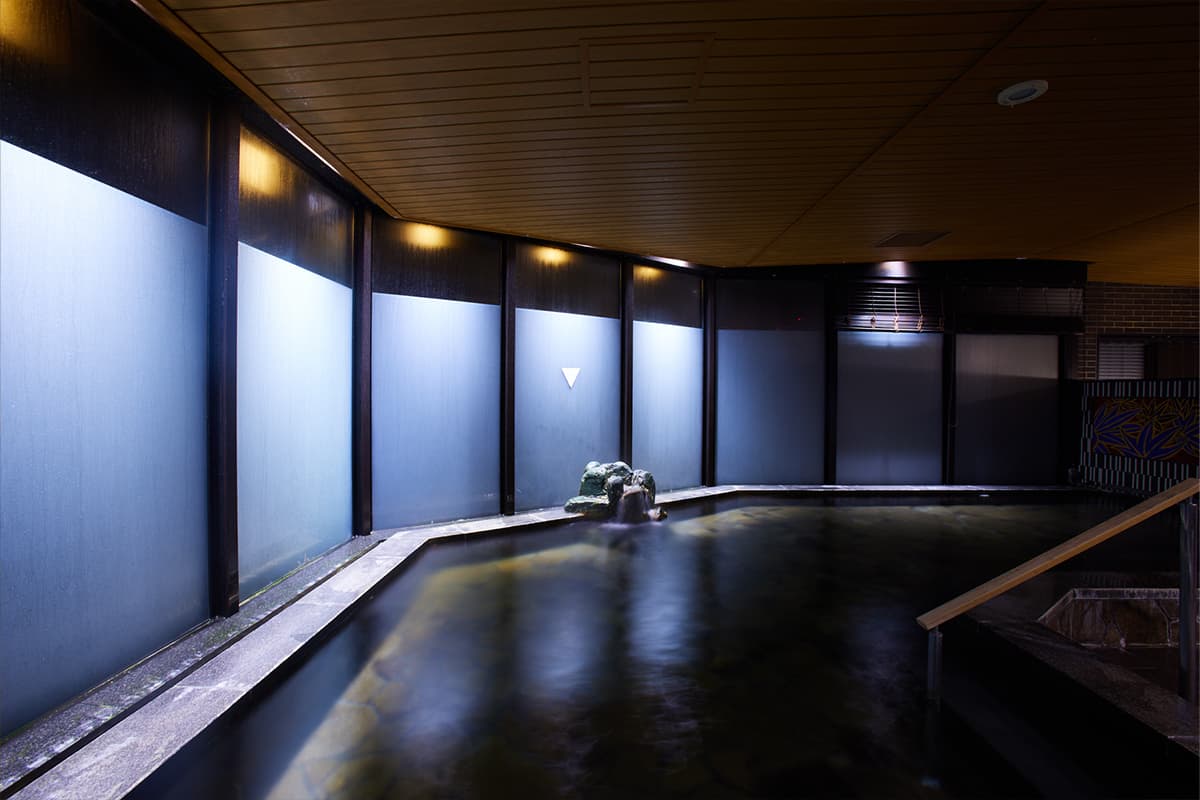
Large communal bath
The only hotel close to the Kyoto station and where you can dip in private natural hot springs.
【Kyoto Onsen Hot Springs facilities】
- Operating hours (Men/women baths switched between morning and evening)
- Day of arrival: 3:00 p.m. to midnight
- Next morning: 6:30 a.m. to 9:30 a.m.
- Indoor bath/Semi open-air bath
- Amenities: Basic skin care set/Hair dryer/Personal care products/Other
- Free water dispenser
- Shower booth
- Free locker (using keys)
Cautions
- Guests with tatoos may not be allowed in the hot springs (if the tatoos are visible to other guests).
- Swimsuits/Devices with camera/Cellphones are prohibited.
- Children with diapers not allowed.
- Please take off your slippers before entering the dressing room.
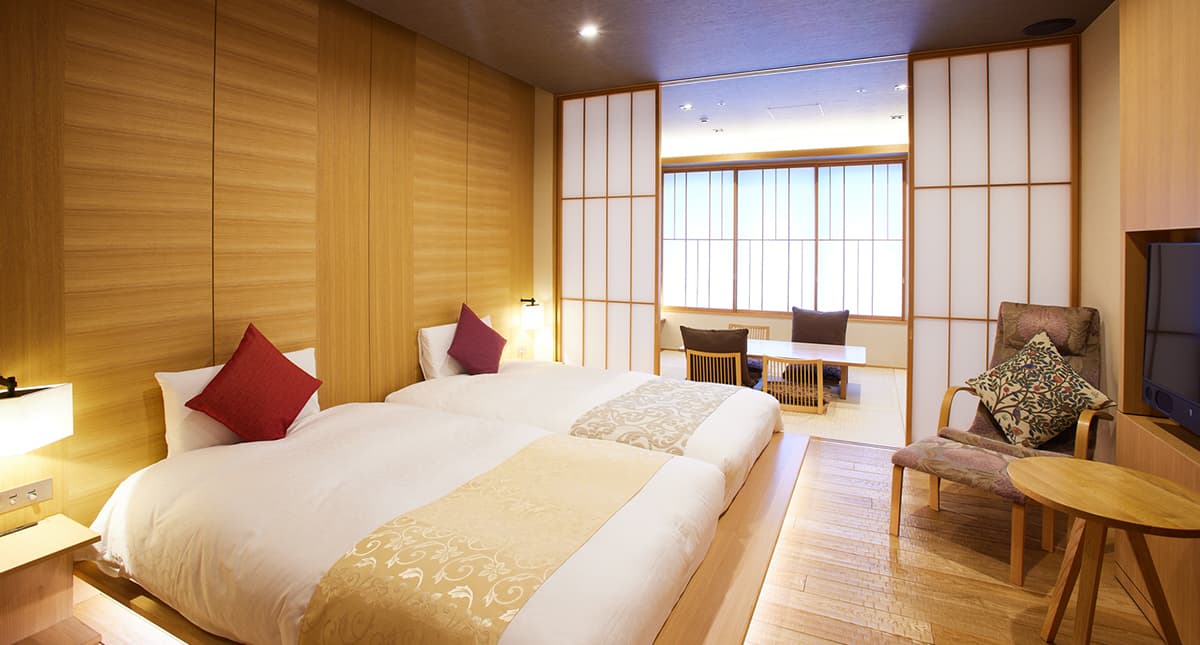

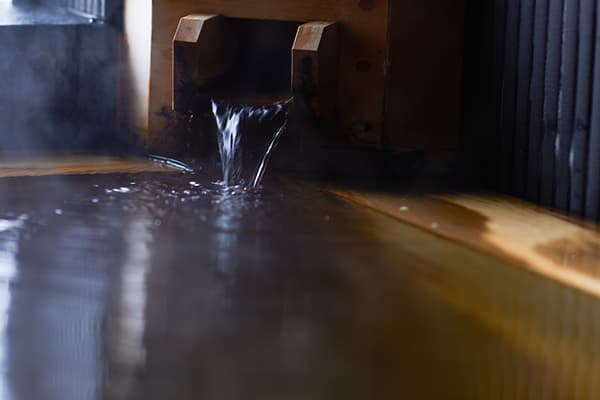
-Sightseeing/Access-
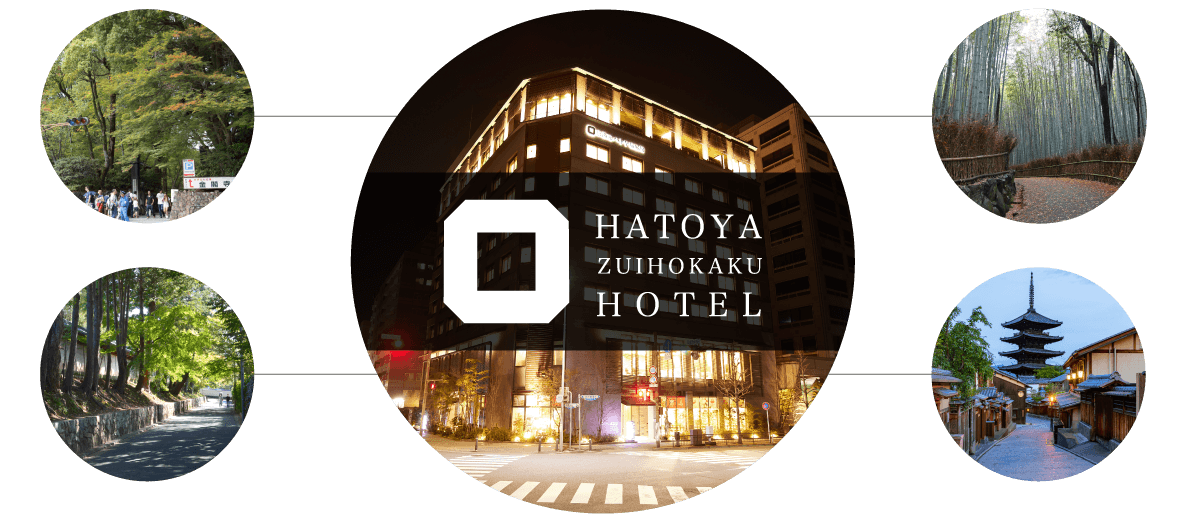
From Our hotel
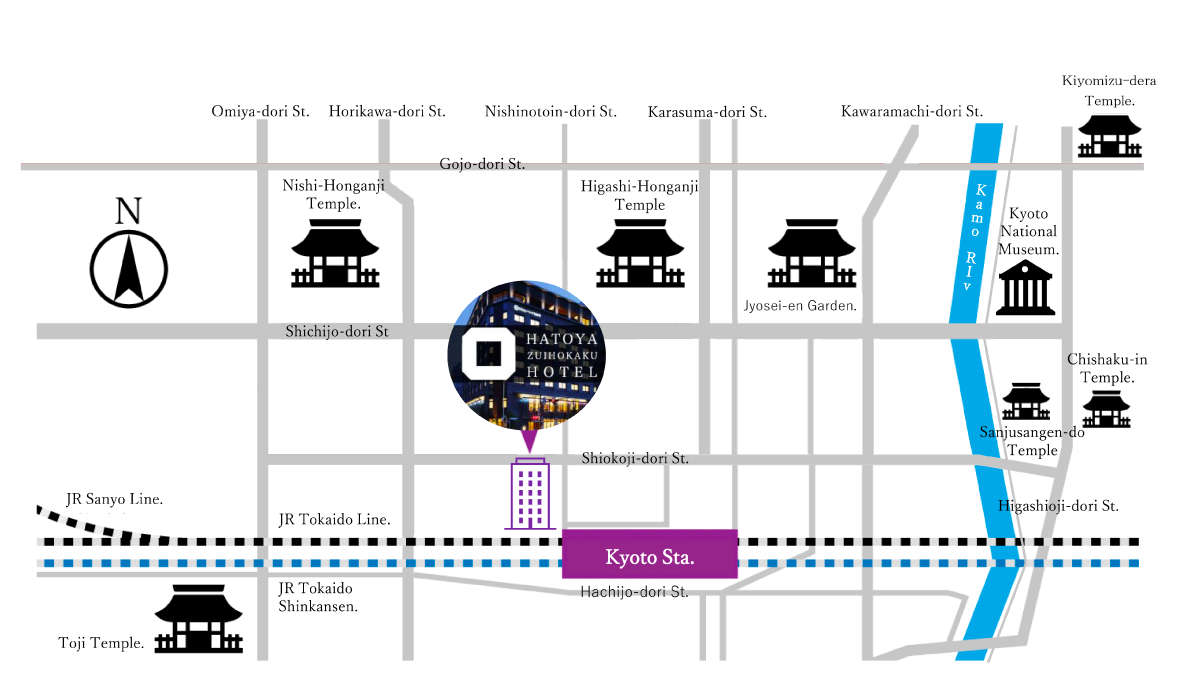
-Sightseeing spots-
- Access to Tofuku-ji temple (About 15min from the Kyoto Station)
- Kyoto City Bus: Lines 202,207 and 208 (Get off at the T?fuku-ji stop)
- Access to Sanjusangen-do temple (About 10min from the Kyoto Station)
- Kyoto City Bus: Lines 100, 206 and 208 (Get off at the Sanjusangendomae stop)
- Access to Fushimi Inari Taisha shrine (About 30min from the Kyoto Station)
- Kyoto City Bus: Line 5 South (Get off at the Inari-Taisha stop).
- Access to the Silver Pavilion/Ginkaku-ji temple (About 40min from the Kyoto Station)
- Kyoto City Bus: Lines 5 and 17 (Get off at the Ginkaku-ji-michi stop).
- Access to Yasaka shrine (About 20min from the Kyoto Station)
- Kyoto City Bus: Lines 100 and 206 (Get off at the Gion stop).
- Access to Kiyomizu temple (About 15min from the Kyoto Station)
- Kyoto City Bus: Lines 206 and 100 (Get off at the Gojozaka stop).
- Access to the Golden Pavilion/Kinkaku-ji temple (About 40min from the Kyoto Station)
- Kyoto City Bus: Lines 101 and 205 (Get off at the Kinkaku-ji-michi stop).
- Access to Shimogamo shrine (About 30min from the Kyoto Station).
- Kyoto City Bus: Lines 4 and 205 (Get off at the Shimogamo-jinja-mae stop).
Access
Kyoto Hot Spring Hatoya Zuihokaku Hotel is located at the heart of Kyoto, a 5-min walk from the Kyoto Rail Station, the transportation hub of the city. The station offers many means of transportation (bus, train and shinkansen lines, taxis, etc.), and is very convenient to travel around the city sightseeing spots and important temples/shrines.

From Kyoto station

Hatoya Zuihokaku Hotel Address
- Hatoya Zuihokaku Hotel Address
802 (Minami Fudodo-cho) Nishi-no-toin shio-koji Sagaru, Kyoto, Kyoto, 600-8234, Japan - Access by Train
Head West and go straight for about 5-minute (by walking) after exiting from the Karasuma central exit of the JR Kyoto Station. - Access from the Airport
- About one-hour and an half ride from the Kansai International Airport to the Kyoto Station using the Haruka Express (JR line).
About 55min ride from the Itami Airport using the Airport Limousine Bus. - About 2h30 ride from the Tokyo Station to the Kyoto Station by Shinkansen (N.b. Narita Airport to Tokyo Station: About 75min by express intercity bus)
Access from other major sightseeing cities
- About 30min ride from the Osaka Station to the Kyoto station by Special Rapide Service train (JR).
- About 2h30 ride from the Tokyo Station to the Kyoto Station by shinkansen.
● Other establishments around the Hotel
Within 10min (by walking) from Kyoto Hot Spring Hatoya Zuihokaku Hotel
